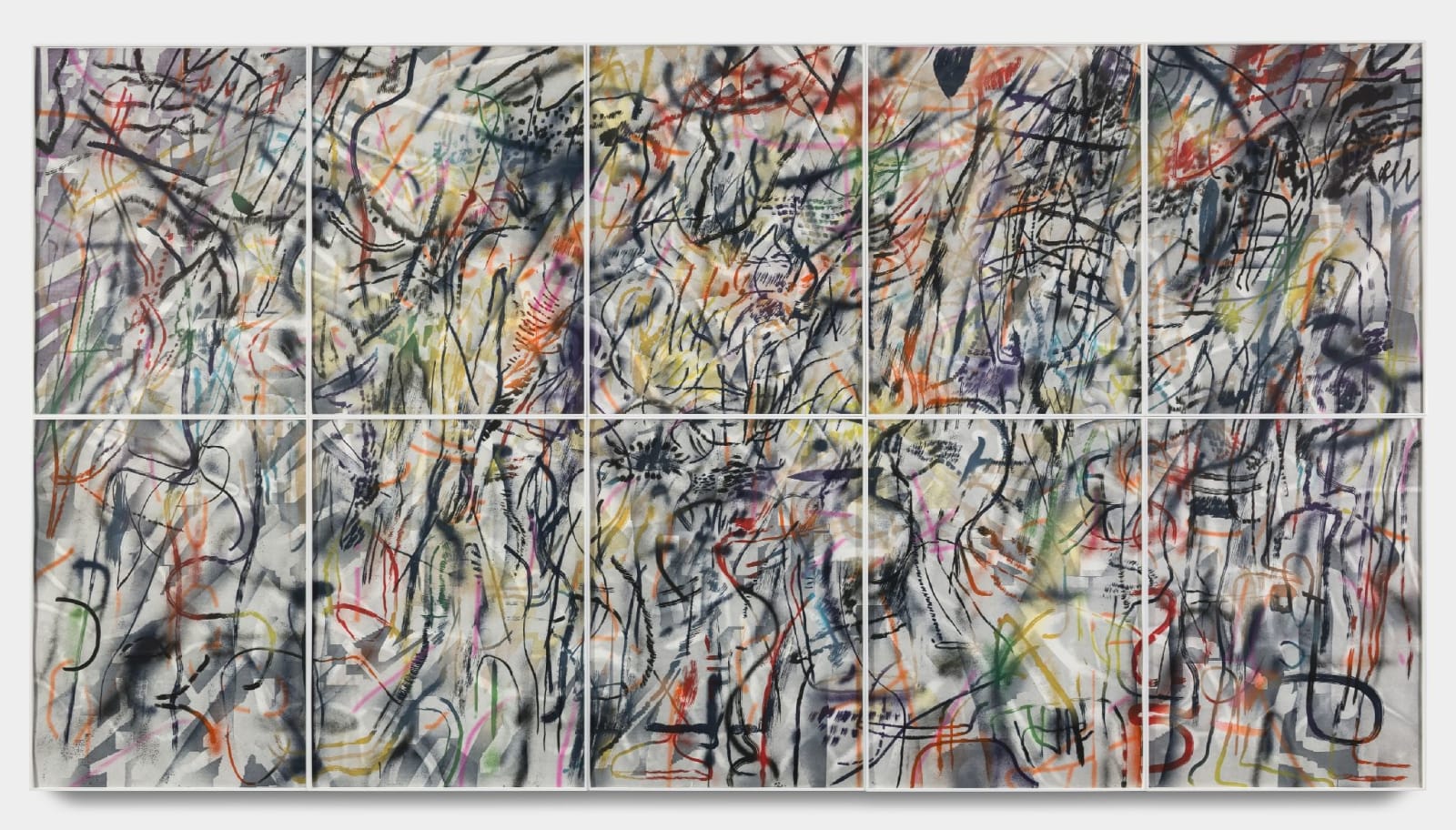









Julie Mehretu Ethiopian-American, b. 1970
118.7 x 87.9 cm
Each framed: 47 1/2 x 35 1/4 x 1 5/8 inches
120.7 x 89.5 x 4.1 cm
Overall, framed: 95 x 176 1/4 x 1 5/8 inches
241.3 x 447.7 x 4.1 cm
Further images
-
(View a larger image of thumbnail 1
)

-
(View a larger image of thumbnail 2
)

-
(View a larger image of thumbnail 3
)

-
(View a larger image of thumbnail 4
)

-
(View a larger image of thumbnail 5
)

-
(View a larger image of thumbnail 6
)

-
(View a larger image of thumbnail 7
)

-
(View a larger image of thumbnail 8
)

-
(View a larger image of thumbnail 9
)

-
(View a larger image of thumbnail 10
)

The print is titled after poet Robin Coste Lewis’s original poem and installation, Intimacy.
The poem and the resulting composite installation stems from a political and aesthetic friendship between Lewis and Julie Mehretu, which grew over decades, the outcome of a continuing conversation between the two who met as graduate students during the heady 90's through shared studies of post-colonial theory, queer studies, and critical race theory. Intimacy mediates on their mutual interest in language, the history of time, mark-making, human migrations, desire and the abstract.In their large scale, in the arrangement of imagery, and in the printmaking techniques used, these etchings are extraordinarily complex. Mehretu initially applied spray paint directly to aquatinted copper plates to create the bold white strokes that underly the imagery. Continuing on by using both Mylars and the plates, she developed the final imagery digitally, in part by working on her computer and determining her desired placement of colors. The printers located the marks to be printed in each color and, through much experimentation and multiple proofings, mapped out the colors for inking each aquatinted copper plate.
The number of colors on each plate ranges 1 to 12, with an ultimate total of 22 different colors, and there are five layers or sequences of plates for each of the ten panels. Requiring a remarkable amount of respect and collaboration between Mehretu and the printers to achieve the editions, ink was applied to the etching plates “a la poupée,” a technique that requires the hand-application of different ink colors to a single copper plate using a tarlatan pad. In all instances, instead of printing multiple colors — or, in the case of Treatises on the Executed, nuanced greys and blacks — via individual copper plates, the delicate application of multiple ink colors onto a single plate results in a gradient of hues that transition as Mehretu’s marks progress through the imagery.